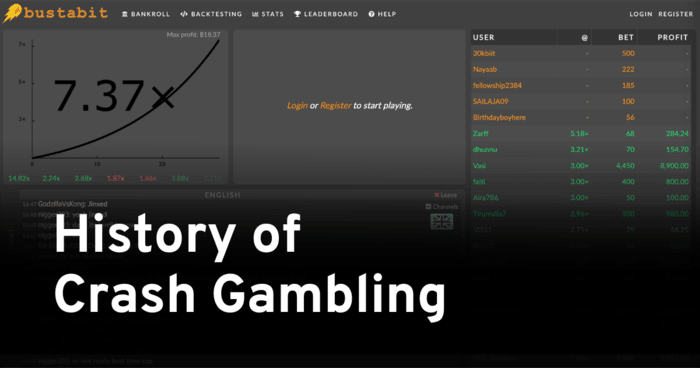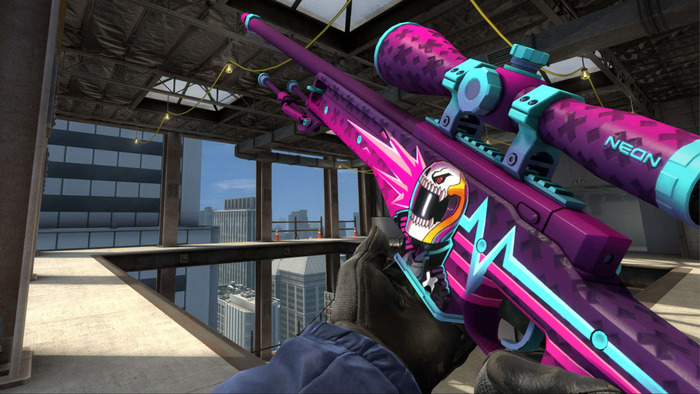A Brief History of Crash Gambling
Crash gambling, a revolutionary concept in online gaming, has surged in popularity within the crypto community in the past 10 years. Originating from platforms like MoneyPot, this genre of casino games has evolved significantly, offering a unique blend of excitement and transparency.
This captivating fusion of chance and technology established an entirely new online gambling genre. Let’s delve into the fascinating history of crash gambling.
Early Beginnings
Back when crash gambling started, the forward-thinking Eric Springer, also known by his online alias “espringe,” presented a revolutionary idea. Along came MoneyPot, a game that radiated a sense of uncomplicated fun while concealing an incredible amount of promise.
The concept that Springer conceived had a chart line design that was simple and similar to modern versions, but it preserved the spirit of automation, fairness, and a house edge that was astonishingly low at 1%.
The Bitcointalk forum threads reflect Springer’s personal involvement in the game’s success, even to the extent that he was willing to sacrifice his own funds.
His devotion became evident through his interactions, where he donated approximately 77 BTC from his savings, showcasing his commitment to expanding the game and bringing joy to the community.
MoneyPot made significant progress in developing a transparent system that can be proven to be fair. Players could be certain that their game experience had not been interfered with thanks to implementing a transparent method based on Bitcoin block seeding events.
By September 2014, the community had celebrated several milestones, including the fact that there had been more than 250,000 plays and 180 BTC wagered, establishing MoneyPot’s reputation as a rapidly expanding success.
MoneyPot to BustaBit
The passing of the baton from Eric Springer to Ryan Havar was a watershed event in the game’s development. BustaBit was introduced as the transition from MoneyPot, incorporating innovative features like the “last-longer bonus,” which received a lukewarm response from the community due to the additional 1% cut from the winnings to feed the bonus pot.
Now directed by Daniel Evans, BustaBit’s long legacy is evidence of the game’s durability and ongoing appeal. Acknowledging the platform’s development, which includes features such as backtesting and gambling scripts, is important as it demonstrates its relevance in the field of crash gambling.
BustaBit’s current position speaks to its continued success as a crash gambling platform. It has retained its relevance, thanks to its ongoing presence, development, and integration of new features, which have helped to cultivate a community that appreciates its unique products and innovations.
The Crash Gambling Takeover
Springer’s brainchild, initially named “MoneyPot,” resembled the core mechanics of contemporary crash games despite its basic chart line design. With solid betting automation and a groundbreaking 1% house edge, MoneyPot swiftly captured the imagination of gambling enthusiasts.
Springer’s personal commitment and financial dedication fueled its growth, demonstrating the enthusiasm and risks involved in pioneering an uncharted gambling landscape. If it wasn’t for him, there would be no crash gambling history to write about.
The game’s success led to a pivotal moment in 2015 when Springer passed the baton, selling MoneyPot to Ryan Havar, marking the rebranding of BustaBit. This transition introduced innovative features like the “last-longer bonus,” although it sparked debates within the community due to its perceived redundancy alongside the existing house edge.
While the genre’s rise was meteoric, it wasn’t without pitfalls. Amid its evolution, challenges emerged, including concerns about fairness and integrity.
The industry faced the shadow of scams and shady gambling practices, prompting a renewed emphasis on provably fair systems to restore trust among players.
The period between 2015 and 2017 marked an incubation phase for crash gambling. The genre’s roots expanded beyond its origins, infiltrating the realms of online casinos and even making inroads into the Counter-Strike gambling scene, buoyed by its allure to win skins and gear.
However, this expansion also exposed vulnerabilities, inviting dishonest practices that demanded stringent measures for fairness.
Conclusion: From Roots to NFTs – The Future of Crash Gambling
As crash gambling thrived, pivotal moments in 2018 propelled its mass adoption. Games like Crash by BC Originals and Chartbet by Stake (now Crash by Stake Originals) etched their place, setting benchmarks with provable fairness and community-centric approaches.
The genre expanded with the introduction of Aviator by Spribe and Roobet’s own version of the crash game, capturing the imaginations of both creators and players with innovative designs and captivating gameplay.
This narrative of crash gambling’s ascent paints a picture of evolution, marked by challenges, innovations, and a quest for fairness.
As it stands today, crash gambling stands as a mainstream cultural phenomenon, enticing not just seasoned gamblers but also carving their niche among online personalities and social media influencers.
Stay tuned for a comprehensive exploration of the next phase in the evolution of crash gambling.






![List Of PC Games Releasing In 2024 [Jan-Sep] List Of PC Games Releasing In 2024 [Jan-Sep]](https://playercounter.com/wp-content/uploads/List-Of-PC-Games-Releasing-In-2024-Jan-Sep-150x150.png)

